(数据科学学习手札119)Python+Dash快速web应用开发——多页面应用
本文示例代码已上传至我的
Github仓库https://github.com/CNFeffery/DataScienceStudyNotes
1 简介
这是我的系列教程Python+Dash快速web应用开发的第十六期,在过往所有的教程及案例中,我们所搭建的Dash应用的访问地址都是单一的,是个单页面应用,即我们所有的功能都排布在同一个url之下。
而随着我们所编写的Dash应用功能的日趋健全和复杂,单一url的内容组织方式无法再很好的满足需求,也不利于构建逻辑清晰的web应用。
因此我们需要在Dash应用中引入路由的相关功能,即在当前应用主域名下,根据不同的url来渲染出具有不同内容的页面,就像我们日常使用的绝大多数网站那样。
而今天的教程,我们就将一起学习在Dash中编写多url应用并进行路由控制的常用方法。
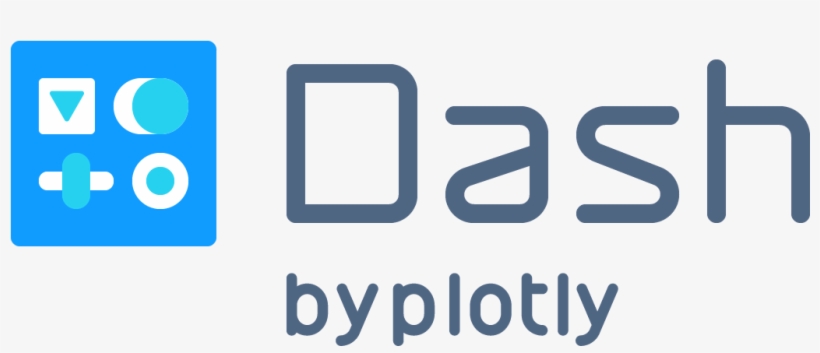 图1
图1
2 编写多页面Dash应用
2.1 Location()的基础使用
要想在Dash中实现url路由功能,首先我们需要捕获到浏览器中地址栏对应的url是什么,这在Dash中可以通过在app.layout中构建一个可以持续监听当前Dash应用url信息的部件来实现。
我们使用官方依赖库dash_core_components中的Location()部件来实现上述功能,它的核心参数或属性有href、pathname、search和hash,让我们通过下面的例子来直观的了解它们各自记录了地址栏url中的哪些信息:
app1.py
import dash
import dash_core_components as dcc
import dash_html_components as html
import dash_bootstrap_components as dbc
from dash.dependencies import Input, Output
app = dash.Dash(__name__)
app.layout = dbc.Container(
[
dcc.Location(id='url'),
html.Ul(id='output-url')
],
style={
'paddingTop': '100px'
}
)
@app.callback(
Output('output-url', 'children'),
[Input('url', 'href'),
Input('url', 'pathname'),
Input('url', 'search'),
Input('url', 'hash')]
)
def show_location(href, pathname, search, hash):
return (
html.Li(f'当前href为:{href}'),
html.Li(f'当前pathname为:{pathname}'),
html.Li(f'当前search为:{search}'),
html.Li(f'当前hash为:{hash}'),
)
if __name__ == '__main__':
app.run_server(debug=True)
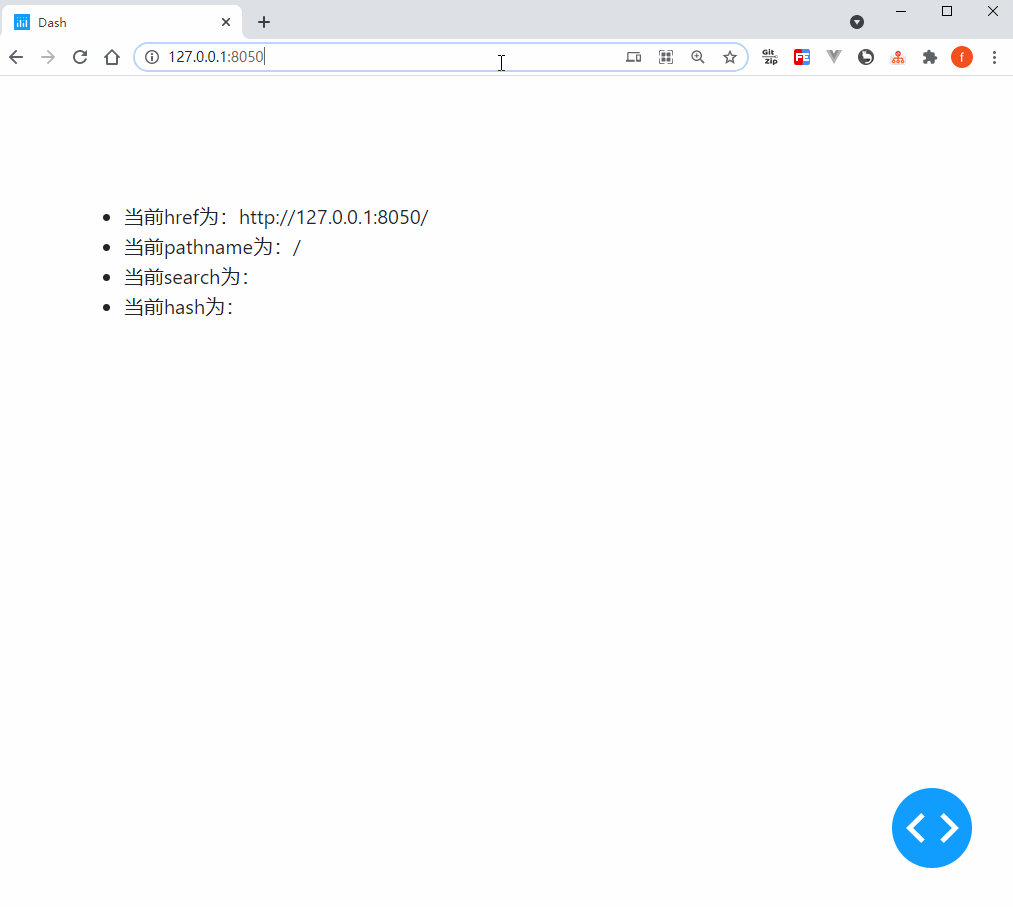 图2
图2
因此在Dash中编写多url应用的核心策略是利用埋点Location()捕获到地址栏对应信息的变化,并以这些信息作为回调函数的输入,来输出相应的页面内容变化,让我们从下面这个简单的例子中get上述这一套流程的运作方式:
app2.py
import dash
import dash_core_components as dcc
import dash_html_components as html
import dash_bootstrap_components as dbc
from dash.dependencies import Input, Output
app = dash.Dash(__name__)
app.layout = dbc.Container(
[
dcc.Location(id='url', refresh=False),
dbc.Row(
[
dbc.Col(
[
html.A('页面A', href='/pageA'),
html.Br(),
html.A('页面B', href='/pageB'),
html.Br(),
html.A('页面C', href='/pageC'),
],
width=2,
style={
'backgroundColor': '#eeeeee'
}
),
dbc.Col(
html.H3(id='render-page-content'),
width=10
)
]
)
],
style={
'paddingTop': '20px',
'height': '100vh',
'weight': '100vw'
}
)
@app.callback(
Output('render-page-content', 'children'),
Input('url', 'pathname')
)
def render_page_content(pathname):
if pathname == '/':
return '欢迎来到首页'
elif pathname == '/pageA':
return '欢迎来到页面A'
elif pathname == '/pageB':
return '欢迎来到页面B'
elif pathname == '/pageC':
return '欢迎来到页面C'
else:
return '当前页面不存在!'
if __name__ == '__main__':
app.run_server(debug=True)
 图3
图3
2.2 利用Location()实现页面重定向
在上一小节我们对dcc.Location()的基础用法进行了介绍,而它的功能可不止监听url变化这么简单,我们还可以利用它在Dash中实现重定向,使用方式简单一句话描述就是将Location()作为对应回调的输出(记住一定要定义id属性),这样地址栏url会在回调完成后对应跳转。
让我们通过下面这个简单的例子来get这个技巧:
app3.py
import dash
import dash_core_components as dcc
import dash_html_components as html
import dash_bootstrap_components as dbc
from dash.dependencies import Input, Output
app = dash.Dash(__name__)
app.layout = dbc.Container(
[
html.Div(id='redirect-url-container'),
dbc.Button('跳转到页面A', id='jump-to-pageA', style={'marginRight': '10px'}),
dbc.Button('跳转到页面B', id='jump-to-pageB'),
],
style={
'paddingTop': '100px'
}
)
@app.callback(
Output('redirect-url-container', 'children'),
[Input('jump-to-pageA', 'n_clicks'),
Input('jump-to-pageB', 'n_clicks')],
)
def jump_to_target(a_n_clicks, b_n_clicks):
ctx = dash.callback_context
if ctx.triggered[0]['prop_id'] == 'jump-to-pageA.n_clicks':
return dcc.Location(id='redirect-url', href='/pageA')
elif ctx.triggered[0]['prop_id'] == 'jump-to-pageB.n_clicks':
return dcc.Location(id='redirect-url', href='/pageB')
return dash.no_update
if __name__ == '__main__':
app.run_server(debug=True)
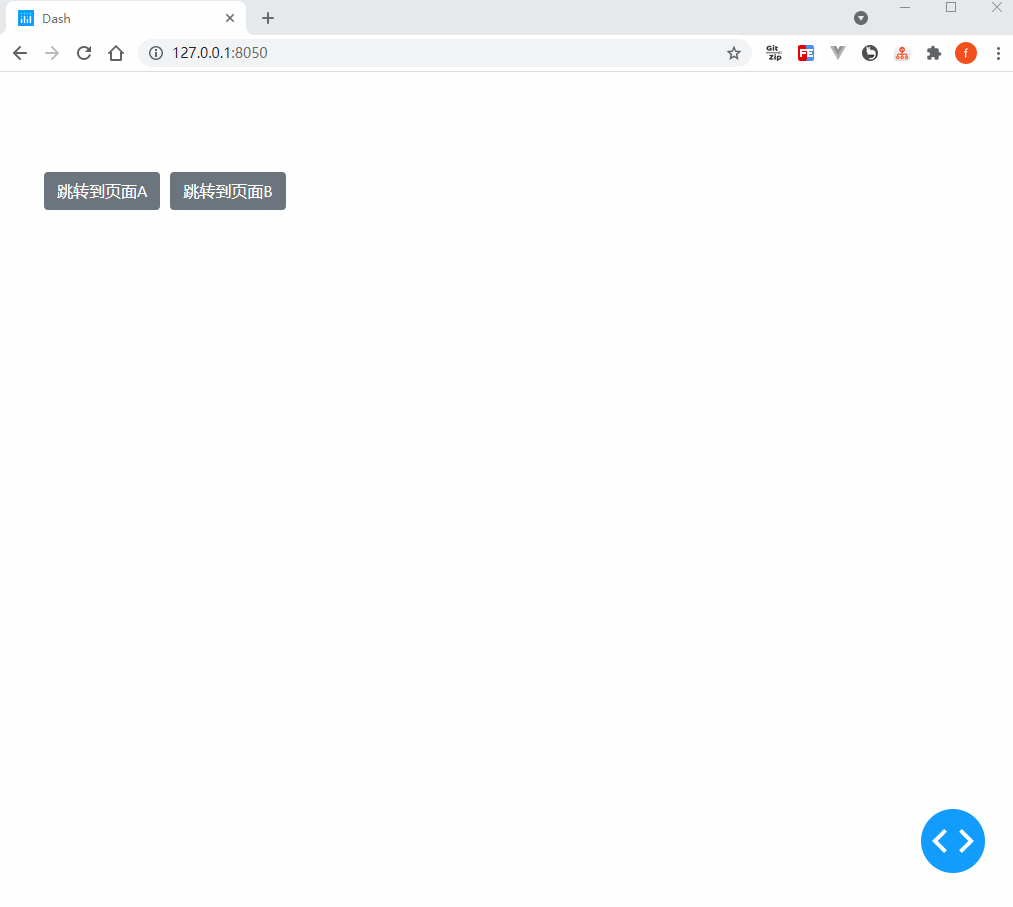 图4
图4
2.3 用Link()实现“无缝”页面切换
你应该注意到了,在Dash中利用Location()和普通的A()部件实现跳转时,页面在跳转后会整体刷新,这会一定程度上破坏整个web应用的整体体验。
而dash_core_components中的Link()部件则是很好的替代,它的基础属性与A()无异,但额外的refresh参数默认为False,会在点击后进行Dash应用内跳转时无缝切换,页面不会整体刷新:
app4.py
import dash
import dash_core_components as dcc
import dash_html_components as html
import dash_bootstrap_components as dbc
from dash.dependencies import Input, Output
app = dash.Dash(__name__)
app.layout = dbc.Container(
[
dcc.Location(id='url'),
dcc.Link('页面A', href='/pageA', refresh=True),
html.Br(),
dcc.Link('页面B', href='/pageB'),
html.Hr(),
html.H1(id='render-page-content')
],
style={
'paddingTop': '100px'
}
)
@app.callback(
Output('render-page-content', 'children'),
Input('url', 'pathname')
)
def render_page_content(pathname):
if pathname == '/':
return '欢迎来到首页'
elif pathname == '/pageA':
return '欢迎来到页面A'
elif pathname == '/pageB':
return '欢迎来到页面B'
elif pathname == '/pageC':
return '欢迎来到页面C'
else:
return '当前页面不存在!'
if __name__ == '__main__':
app.run_server(debug=True)
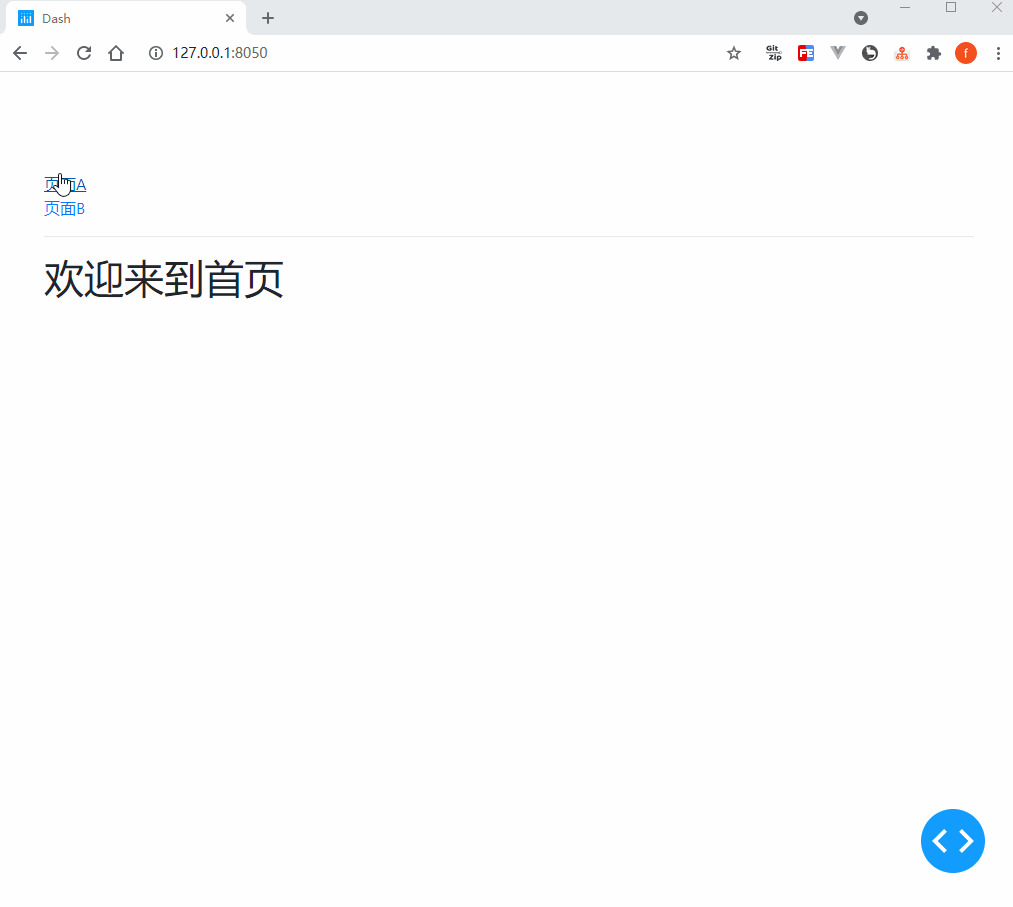 图5
图5
类似的功能还有dash_bootstrap_components中的NavLink(),用法与Link()相似,这里就不再赘述。
3 动手开发个人博客网站
掌握了今天的知识之后,我们来用Dash开发一个简单的个人博客网站,思路是在Location()监听url变化的前提下,后台利用网络爬虫从我的博客园Dash主题下爬取相应的网页内容,并根据用户访问来渲染出对应的文章:
app5.py
import dash
import dash_core_components as dcc
import dash_html_components as html
import dash_bootstrap_components as dbc
import dash_dangerously_set_inner_html # 用于直接渲染html源码字符串
from dash.dependencies import Input, Output
import re
from html import unescape
import requests
from lxml import etree
app = dash.Dash(__name__, suppress_callback_exceptions=True)
app.layout = html.Div(
dbc.Spinner(
dbc.Container(
[
dcc.Location(id='url'),
html.Div(
id='page-content'
)
],
style={
'paddingTop': '30px',
'paddingBottom': '50px',
'borderRadius': '10px',
'boxShadow': 'rgb(0 0 0 / 20%) 0px 13px 30px, rgb(255 255 255 / 80%) 0px -13px 30px'
}
),
fullscreen=True
)
)
@app.callback(
Output('article-links', 'children'),
Input('url', 'pathname')
)
def render_article_links(pathname):
response = requests.get('https://www.cnblogs.com/feffery/tag/Dash/',
headers={
'User-Agent': 'Mozilla/5.0 (Windows NT 10.0; Win64; x64) AppleWebKit/537.36 (KHTML, like Gecko) Chrome/89.0.4389.114 Safari/537.36'
})
tree = etree.HTML(response.text)
posts = [
(href, title.strip())
for href, title in zip(
tree.xpath("//div[@class='postTitl2']/a/@href"),
tree.xpath("//div[@class='postTitl2']/a/span/text()")
)
]
return [
html.Li(
dcc.Link(title, href=f'/article-{href.split("/")[-1]}', target='_blank')
)
for href, title in posts
]
@app.callback(
Output('page-content', 'children'),
Input('url', 'pathname')
)
def render_article_content(pathname):
if pathname == '/':
return [
html.H2('博客列表:'),
html.Div(
id='article-links',
style={
'width': '100%'
}
)
]
elif pathname.startswith('/article-'):
response = requests.get('https://www.cnblogs.com/feffery/p/%s.html' % re.findall('\d+', pathname)[0])
tree = etree.HTML(response.text)
return (
html.H3(tree.xpath("//title/text()")[0].split(' - ')[0]),
html.Em('作者:费弗里'),
dash_dangerously_set_inner_html.DangerouslySetInnerHTML(
unescape(etree.tostring(tree.xpath('//div[@id="cnblogs_post_body"]')[0]).decode())
)
)
return dash.no_update
if __name__ == '__main__':
app.run_server(debug=True)
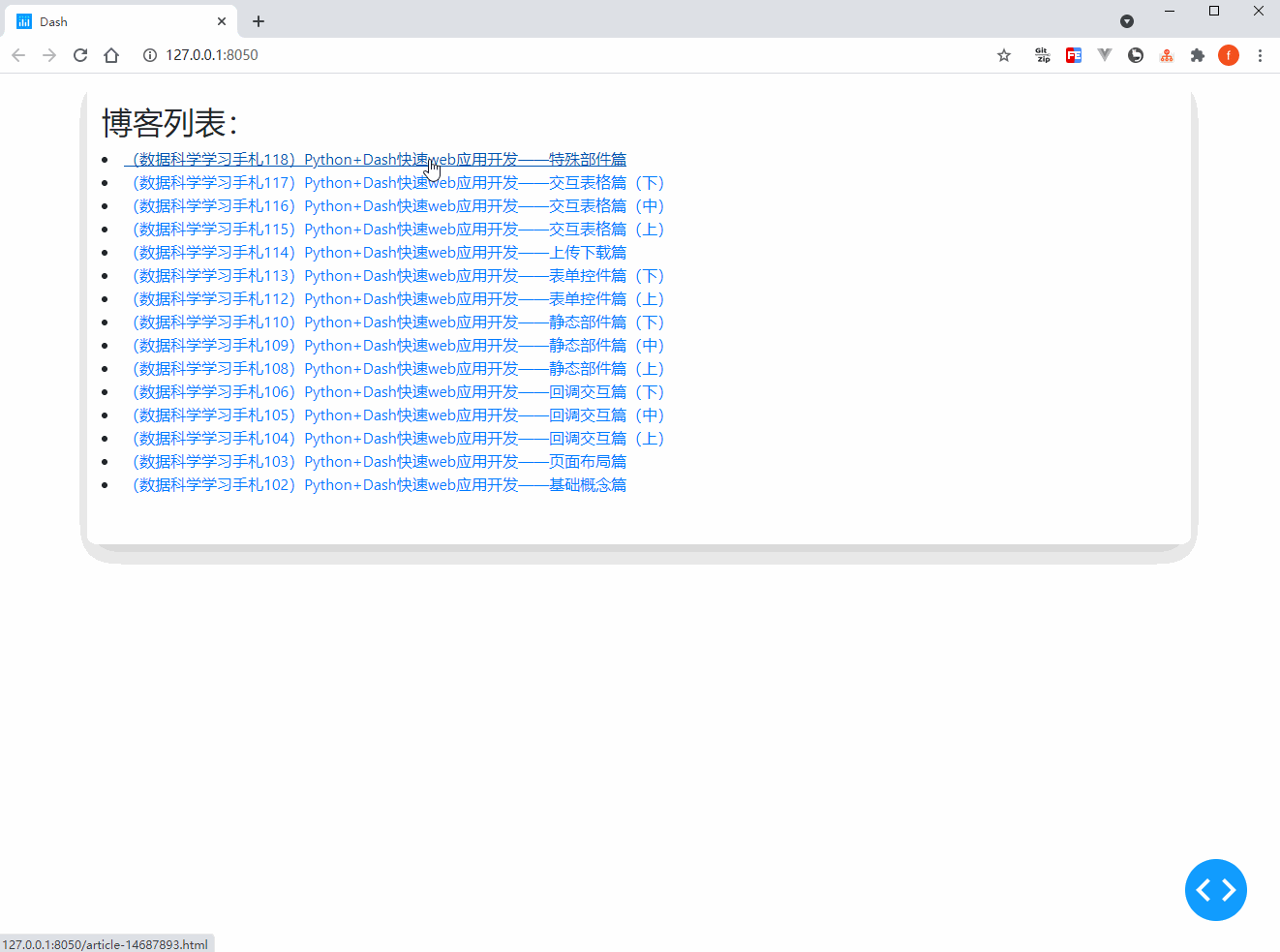 图6
图6
按照类似的思路,你可以随心所欲地开发自己的多页面应用,进一步丰富完善你的Dash应用功能。
以上就是本文的全部内容,欢迎在评论区发表你的意见和想法。
(数据科学学习手札119)Python+Dash快速web应用开发——多页面应用的更多相关文章
- (数据科学学习手札102)Python+Dash快速web应用开发——基础概念篇
本文示例代码与数据已上传至我的Github仓库https://github.com/CNFeffery/DataScienceStudyNotes 1 简介 这是我的新系列教程Python+Dash快 ...
- (数据科学学习手札108)Python+Dash快速web应用开发——静态部件篇(上)
本文示例代码已上传至我的Github仓库https://github.com/CNFeffery/DataScienceStudyNotes 1 简介 这是我的系列教程Python+Dash快速web ...
- (数据科学学习手札109)Python+Dash快速web应用开发——静态部件篇(中)
本文示例代码已上传至我的Github仓库https://github.com/CNFeffery/DataScienceStudyNotes 1 简介 这是我的系列教程Python+Dash快速web ...
- (数据科学学习手札112)Python+Dash快速web应用开发——表单控件篇(上)
本文示例代码已上传至我的Github仓库https://github.com/CNFeffery/DataScienceStudyNotes 1 简介 这是我的系列教程Python+Dash快速web ...
- (数据科学学习手札115)Python+Dash快速web应用开发——交互表格篇(上)
本文示例代码已上传至我的Github仓库https://github.com/CNFeffery/DataScienceStudyNotes 1 简介 这是我的系列教程Python+Dash快速web ...
- (数据科学学习手札116)Python+Dash快速web应用开发——交互表格篇(中)
本文示例代码已上传至我的Github仓库https://github.com/CNFeffery/DataScienceStudyNotes 1 简介 这是我的系列教程Python+Dash快速web ...
- (数据科学学习手札117)Python+Dash快速web应用开发——交互表格篇(下)
本文示例代码已上传至我的Github仓库https://github.com/CNFeffery/DataScienceStudyNotes 1 简介 这是我的系列教程Python+Dash快速web ...
- (数据科学学习手札118)Python+Dash快速web应用开发——特殊部件篇
本文示例代码已上传至我的Github仓库https://github.com/CNFeffery/DataScienceStudyNotes 1 简介 这是我的系列教程Python+Dash快速web ...
- (数据科学学习手札120)Python+Dash快速web应用开发——整合数据库
本文示例代码已上传至我的Github仓库https://github.com/CNFeffery/DataScienceStudyNotes 1 简介 这是我的系列教程Python+Dash快速web ...
随机推荐
- 第47天学习打卡(HTML)
什么是HTML HTML Hyper Text Markup Language(超文本标记语言) 超文本包括:文字,图片,音频,视频,动画等 HTML5,提供了一些新的元素和一些有趣的新特性,同时也建 ...
- CCF(管道清洁):最小费用最大流
管道清洁 201812-5 需要清洁的管道下界为1, 不需要清洁的管道下界为0, 可重复经过的管道上界为正无穷, 不可重复经过的管道上界为1. 这属于无源无汇的有容量下界的最小费用可行流.解决的方法就 ...
- mysql-canal-rabbitmq 安装部署教程
原文 1.1. 开启 MySQL 的 binlog 日志 修改 my.cnf 或 my.ini(windows), 添加配置项: # binlog 日志存放路径 log-bin=D:\env\mysq ...
- TensorFlow学习(1)
初识TensorFlow 一.术语潜知 深度学习:深度学习(deep learning)是机器学习的分支,是一种试图使用包含复杂结构或由多重非线性变换构成的多个处理层对数据进行高层抽象的算法. 深度学 ...
- 解决图片把父元素向下撑大大约3px问题
现象 bug: 图片在div\li\dt 等 图片把父元素向下撑大大约3px <style> img { width: 30%; //这里由于 ...
- golang io操作之写篇
/** * @author livalon * @data 2018/9/4 15:11 */ package main import ( "os" "fmt" ...
- Python-celery的使用
安装:pip install celery pip install eventlet 需要提前安装redis. (Download, extract and compile Redis with: $ ...
- 京东数科面试真题:常见的 IO 模型有哪些?Java 中的 BIO、NIO、AIO 有啥区别?
本文节选自<Java面试进阶指北 打造个人的技术竞争力> 面试中经常喜欢问的一个问题,因为通过这个问题,面试官可以顺便了解一下你的操作系统的水平. IO 模型这块确实挺难理解的,需要太多计 ...
- Linux 三剑客之 awk 实战详解教程
我们知道 Linux 三剑客,它们分别是:grep.sed.awk.在前边已经讲过 grep 和 sed,没看过的同学可以直接点击阅读,今天要分享的是更为强大的 awk. sed 可以实现非交互式的字 ...
- socket 之send和recv原理剖析
认识TCP socket的发送缓冲区和接收缓冲区 当创建一个TCP socket对象的时候会有一个发送缓冲区和一个接收缓冲区,相当与内存中的一片空间 send原理剖析 send是不是直接把数据发送给服 ...
